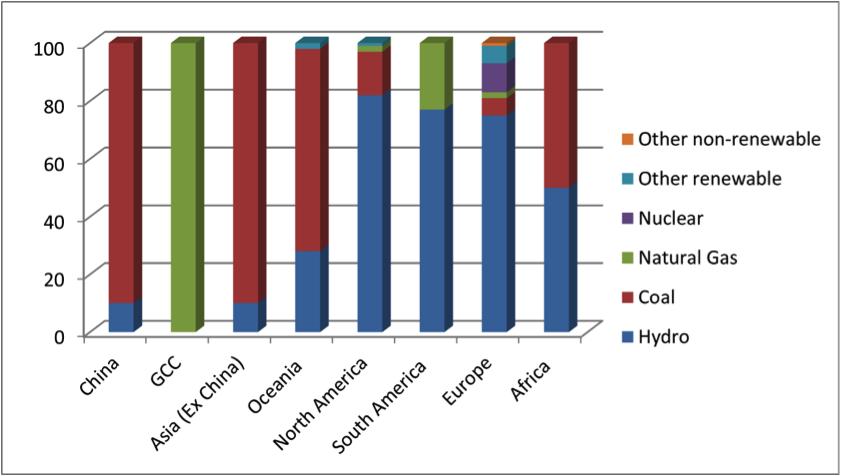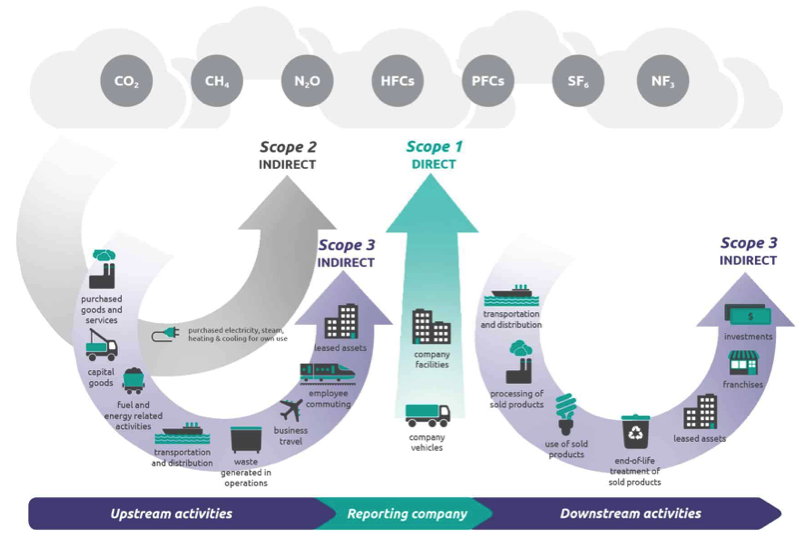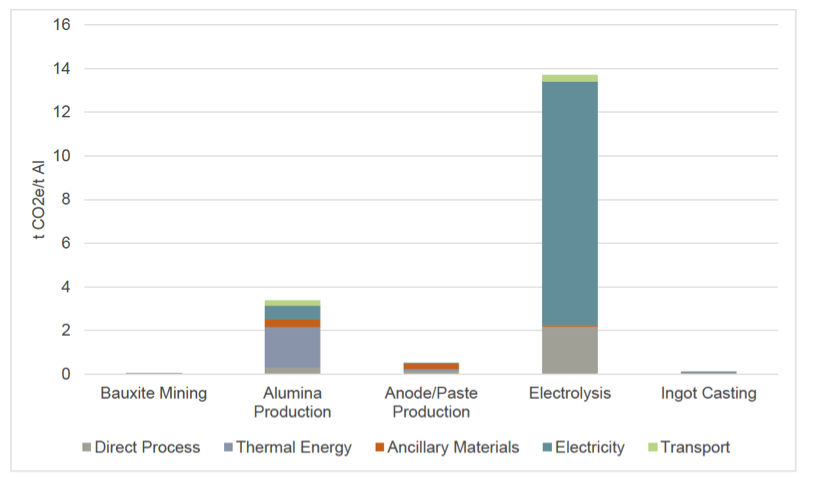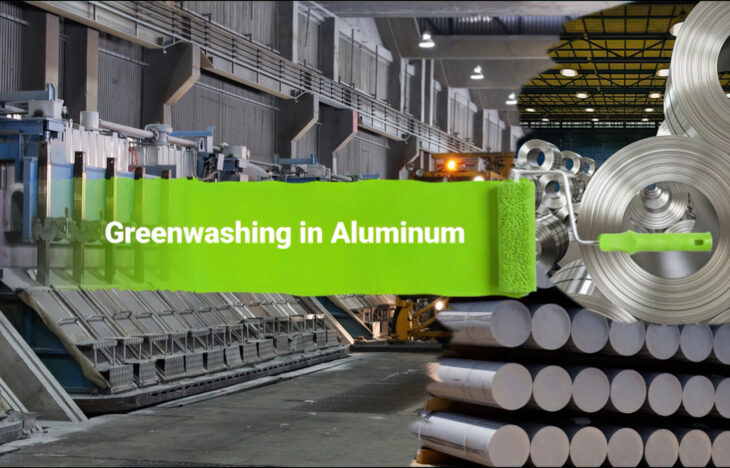By Subodh Das, Phinix, LLC, and Martin Hartlieb, Viami International Inc.
Environmental sustainability has become a major trend across aluminum and other industries. A vast majority of companies are aspiring to achieve lower carbon resources in their operations and products, based on circular economy and Paris Agreement parameters. Generally, this trend is positive. However, while companies are working to improve their environmental credentials, there are issues surrounding how those companies are communicating the sustainability of their activities, products, and materials.
Words such as “sustainable,” “low carbon,” “zero carbon,” “eco-friendly,” and “green” have become an integral part of the vocabulary for environmental, social, and corporate governance (ESG) reports and disclosures, as well as the basic public relations campaigns for these companies. The problem is that the definition and meaning of these so-called green terms are not well defined or understood and often these terms are used interchangeably for marketing purposes. Most of these words are overused to the extent of diluting the actual message they are meant to convey. This issue, known as “greenwashing,” is a growing problem.
Defining Greenwashing
Greenwashing is an effort to overstate environmental facts with superficial and incomplete statements and information, essentially washing over the truth with the illusion of environmental sustainability. This practice results in the publication of misleading information about the environmental credentials of a product, process, or facility. This equates to deceiving customers into believing something is environmentally sustainable—even if that product is not actually as sustainable as it is perceived.
By leveraging growing customer interest toward environmentally sustainable or green products, corporations are able to gain market share and secure their profits. This has an impact on those companies that are genuinely working to improve their environmental footprint, as they get lost in the wash of supposedly green brands.
Greenwashing is gaining traction because there are not enough specific regulations that define what sustainability means in a manufacturing environment. The first step toward clearing up these misconceptions is to define the list of terms and regulate their usage. This article will decode some of these terms that are pertinent to the aluminum sector.
Green or Sustainable
As concepts, “green” and “sustainable” are both related to environmental consciousness and natural resource preservation. However, it is incorrect to use both words synonymously.
“Green” is strictly concerned with environmental health, going beyond recycling and reuse. The term denotes any product or process that promotes ecological well-being and responsible use of natural resources, while satisfying present needs.
On the other hand, “sustainability” is more encompassing, involving resource utilization and conservation for future generations, economic vitality, social benefits, and environmental gains. So, everything that is green may not be sustainable.
Terms for Carbon Usage
More and more companies are pledging to become carbon neutral or have net-zero carbon or low carbon production. However, the meaning of these terms, as stated in these declarations, is not always clear.
Generally speaking, “carbon neutral” represents a company policy aiming to limit or capture carbon emissions and offset all remaining carbon emissions through the purchase of carbon credits. Offsets are like substitutes that compensate for CO2 emissions by cutting emissions elsewhere, e.g., by planting trees.
On the other hand, “net-zero carbon” means that the company is modifying its processes to cut carbon emissions to the lowest possible amount (not exactly zero) and offsetting what can’t be reduced and captured as a last resort. It is impossible to eliminate all emissions from a process, despite implementing all available reduction initiatives. Offsetting helps balance CO2 emissions. The removal must be permanent and accredited or licensed to claim it.
“Low carbon” is often defined differently by various companies. A proper benchmark must be created and used to define a product or a process as “low carbon” before marketing them, as the lack of common standards leads to sub-optimization and greenwashing.
Scrap Sourcing Terminology
Several companies are marketing and branding their products as made from recycled or secondary material without disclosing the details of the source of scrap, or whether its pre-consumer or post-consumer scrap. Pre-consumer scrap is scrap that comes from the manufacturing process, while post-consumer scrap comes from materials collected after the product’s end-of-life (EOL).6 Both types of scrap use significantly less energy than primary production—but there is a difference between the two.
Most companies use their own or external in-process scrap. While using this recycled material is still an improvement over primary aluminum, it is not as environmentally friendly as using post-consumer scrap.
A product made (fully or partially) from post-consumer scrap uses scrap material that was diverted from landfills. When scrap ends up in landfill, the energy that was used to first make the material is wasted. Since it is diverted from landfills, any post-consumer scrap resets the scrap material’s carbon footprint to near-zero. Therefore, products with high levels of post-consumer recycled waste are undoubtedly green.
When industry players market their material as having a “high level of recycled content,” they are bordering on greenwashing. It is important for companies to be clear about the kind of recycled content in their products and what percentage is pre-consumer versus post-consumer scrap.
Infinite Recyclability
Can aluminum truly be considered infinitely recyclable? Theoretically, yes. But it’s not that simple. Melt loss tends to naturally occur (usually 2-10% for every melt). In all practicality, as per melt loss calculations, aluminum can be recycled about 10-15 times. Hence, using the word “infinite” is mathematically incorrect or exaggerated.
In addition, the recycled aluminum needs to retain the initial properties of the materials after being scrapped. In the case of pure primary aluminum, the material can be remelted in a furnace multiple times without really changing its quality. However, scrap does not come in pure form, and it’s not always possible to fully segregate the scrap (in solid or chip form) into its specific alloy types. The scrap may also contain contaminants. As a result, the melt can pick up impurities during the remelting process or the alloying elements can be burned off during remelting.
Therefore, aluminum recyclers tend to dilute the recycled aluminum with new, clean primary metal and add alloying elements to bring it back into a functional specification. Scrap recycling also requires a number of additional processes, including collection, transportation, sorting, and processing. Sometimes, the effort is environmentally worth it, but is not economically viable.
In order to have infinitely recycled material, the aluminum industry also needs to develop additional melting and cleaning technologies that are capable of preparing post-consumer scrap, so that melt loss and impurities are nearly eliminated. The industry also needs to design more alloys that have been specifically designed for recycling.
Currently, there are two excellent examples of near-infinite recycling in the aluminum industry, including used beverage cans (UBC) and wheels. Both of these products are easy to collect from the waste stream and sort into their specific aluminum alloys for remelting.
Renewable Energy vs. Fossil Fuels
The concept of sustainability is often boiled down to the kind of fuel that is being used in production and operation, with renewable energy sources (solar, wind, hydropower, etc.) being more environmentally friendly than fossil fuels (oil and gas). As a result, some companies are either leveraging their access to hydropower or investing to substitute their fuel sources with renewable ones by partnering with energy companies to build new alternative power plants or sourcing renewable energy from a third party.
This energy issue is mainly important for primary aluminum production, as it is energy intensive and is the main contributor to the carbon footprint of the aluminum industry. Secondary aluminum always has a much lower carbon footprint. However, even with secondary aluminum, every melting step consumes a significant amount of energy, so switching furnaces from fossil fuel to electrical can make quite a difference for the overall carbon footprint.1
Currently, the majority of the aluminum industry uses fossil fuels, representing 80% of the worldwide aluminum capacity (Figure 1).2 Based on the amount of energy required to fuel the aluminum industry, renewable energy sources will not be able to completely replace fossil fuels—even considering the most aggressive use of renewables available. As a result, there has to be a balance between the two.

Corporations that are able to make sustainability claims based on the type of power used are those who are fortunate enough to either have easy access to renewables, like hydropower, or are substituting a small portion of their energy needs with renewables to earn environmental brownie points. Not every company is fortunate enough to have access to these resources.
For these reasons, one cannot solely determine an aluminum product’s sustainability based on the fuels used to produce it. Basing the sustainability benchmark exclusively on the fuel source may lead to the industry neglecting many other serious issues related to sustainability.
Calculating the Carbon Footprint for Aluminum
How are carbon emissions or the carbon footprint of a company calculated in the aluminum industry? The Greenhouse Gas Corporate Accounting and Reporting Standard (GHG Protocol Corporate Standard) is the most common standard used by industries around the world.3 It defines environmental performance based on three scopes (Figure 2), as follows:
- Scope 1: Direct emissions of the company.
- Scope 2: Indirect emissions from purchased energy.
- Scope 3: All indirect emissions from the entire value chain, including raw materials (which is the most difficult calculation for most metal and casting producers).

Many primary aluminum producers use the International Aluminium Institute (IAI) standard,4 which has three environmental performance levels. These levels are as follows:
- Level 1: Emissions from aluminum electrolysis, ingot casting, anode production, and electricity production (basically, the same as the GHG Scope 1 and 2 benchmarks). Currently, this is typically used to define “low carbon aluminum.”
- Level 2: Direct emissions from bauxite mining and alumina refining, electricity, heat production, and fuel combustion from those processes.
- Level 3: The complete cradle-to-gate carbon footprint of primary aluminum, including all raw material transports, electricity, heat generation, dross processing, and ancillary materials.
Primary aluminum has huge variations in its carbon footprint (especially those alloys with high contents of other elements). The carbon footprint for primary aluminum can range from under 4 t CO2/t Al to over 20 t CO2/t Al—mainly depending on the energy sources and technologies used.
Bauxite mining represents a small portion of the primary aluminum carbon footprint, but alumina refining can have a footprint of between 0.4–6.8 t CO2/t alumina, with a global average of 1.2 t CO2/t alumina. Anode and paste production, as well as ingot casting, further add to the footprint—but the main contribution comes from the electrolysis process itself. Figure 3 shows the global average CO2 emissions for each stage of the primary production process, estimating the current global average carbon footprint for primary aluminum to be around 16.8 t CO2/ t Al (cradle-to-gate).5

Some producers have started tackling this problem by implementing traceability of their supply chain using blockchain technology and then certifying the process. This enables them to provide the full carbon footprint of their products to interested customers. This data is good for comparing primary smelters, but is only really useful if it discloses the full IAI Level 3 and/or GHG Scope 1-3 numbers.
How Greenwashing Happens
Producers use greenwashing to uplift the environmental image of their products, regardless of whether that is fully reflected by data. This happens in several ways.
Fuel-Based Classification
The energy source is the main driver of the carbon footprint in aluminum. Nevertheless, it is not the only area that impacts the carbon footprint of the operation. To fully understand the environmental impact, companies must look beyond fuel consumption and include a complete calculation and disclosure of all IAI or GHG standards.
Misinterpretation of Recycled Content
As discussed earlier in the article, some aluminum producers are focused on presenting the percentage of recycled content (i.e., 50% or 75% scrap) without describing the source or type of the scrap (whether it’s in-house process scrap or EOL post-consumer scrap). This is information that should be disclosed, as the use of EOL scrap has a much more beneficial impact on the environment.
Recovering post-consumer aluminum from a scrapped, collected, and remelted product adds new life to a material—and this should be the focus of recycling efforts. Looking at only the percentage of overall recycled content, rather than the type of scrap used puts less emphasis on EOL scrap.
The unfortunate fact is that a significant amount of aluminum scrap still ends up in landfills—and its vitally important that the aluminum industry invest in methods that limit this from happening. How can the industry justify the value of recycled content, if so much valuable aluminum is lost to landfills?
Negating the Significance of Primary Metal
According to the IAI, the share of primary and secondary aluminum in 2021 stood at an estimated 66% and 34%, respectively. Although the share of secondary aluminum will likely climb, recycled aluminum will not be able to completely replace primary metal—certainly not in the short or mid-term. The world will need primary aluminum for the foreseeable future, and those companies discussing the idea of secondary aluminum replacing primary metal entirely are also bordering on greenwashing.
Implying “Carbon Free” Aluminum
Low carbon aluminum is generally considered to be less than 4 t CO2/t Al, based on IAI Level 1 emissions. For primary aluminum this is usually achieved through renewable energy (typically hydropower). Additional methods of reducing the carbon footprint for smelting are the use of advance electrolysis technologies, such as inert anodes. For downstream producers, achieving a low footprint often involves the integration of recycled content (especially in alloyed ingots, billets, and slab).
However, some primary and downstream producers state their aluminum is “carbon-free” when it is not—contributing to the problem of greenwashing and misleading customers. For example, although the use of inert anodes can remove all direct emissions from the electrolysis process, this does not make primary aluminum production “carbon free.” In order to be fully carbon free, the primary aluminum smelter would need to ensure that every step of the process is carbon free, from bauxite to inert anode production, to energy use, to logistics and so on.
Conclusion
Aluminum itself is an easily recyclable and very sustainable material. The ideal situation would balance renewable energy and low carbon technology in primary aluminum production with improved metal recycling, especially regarding collection, segregation, and processing.
The topic of greenwashing in aluminum needs serious discourse, and the policymakers, associations, and institutes involved in the industry need to regulate the environmental and sustainability benchmarks. Furthermore, all industry participants must follow the same standards and regulations and report/disclose sustainability metrics properly and honestly.
Appropriate transparency regarding a product’s environmental credentials and recycling benchmarks can prevent greenwashing across the industry. The process starts with raising awareness about the practice, so that companies doing their best to support the environment and sustainability are not overshadowed by corporate greenwashing. In the case of the aluminum industry, terms such as “low carbon primary aluminum” should be clearly defined, with clarity about which IAI Levels and GHG Scopes need to be included in these definitions. For recycled/secondary aluminum, the carbon footprint of in-process/pre-consumer scrap needs to be standardized, which will allow the same calculation methods to be applied everywhere around the worldwide industry.
References
- Beaulieu, Demers, Desrosiers, and Hartlieb, “Carbon Footprint Reduction in Aluminum Die Casting,” Die Casting Engineer Magazine, January 2022, pp. 24-30.
- Das, Subodh, “The Quest for Low Carbon Aluminum: Developing a Sustainability Index,” Light Metal Age, February 2021, pp. 44-49.
- “Corporate Value Chain (Scope 3) Accounting and Reporting Standard,” GHG Protocol.
- “Aluminium Carbon Footprint Technical Support Document,” World Aluminium, February 2018.
- “Life Cycle Inventory (LCI) Data and Environmental Metrics,” IAI, June 2017, p. 38.
- “Greenwashing: a potential credibility problem for aluminium,” Hydro, November 2011.
Editor’s Note: This article first appeared in the August 2021 issue of Light Metal Age. To receive the current issue, please subscribe.

